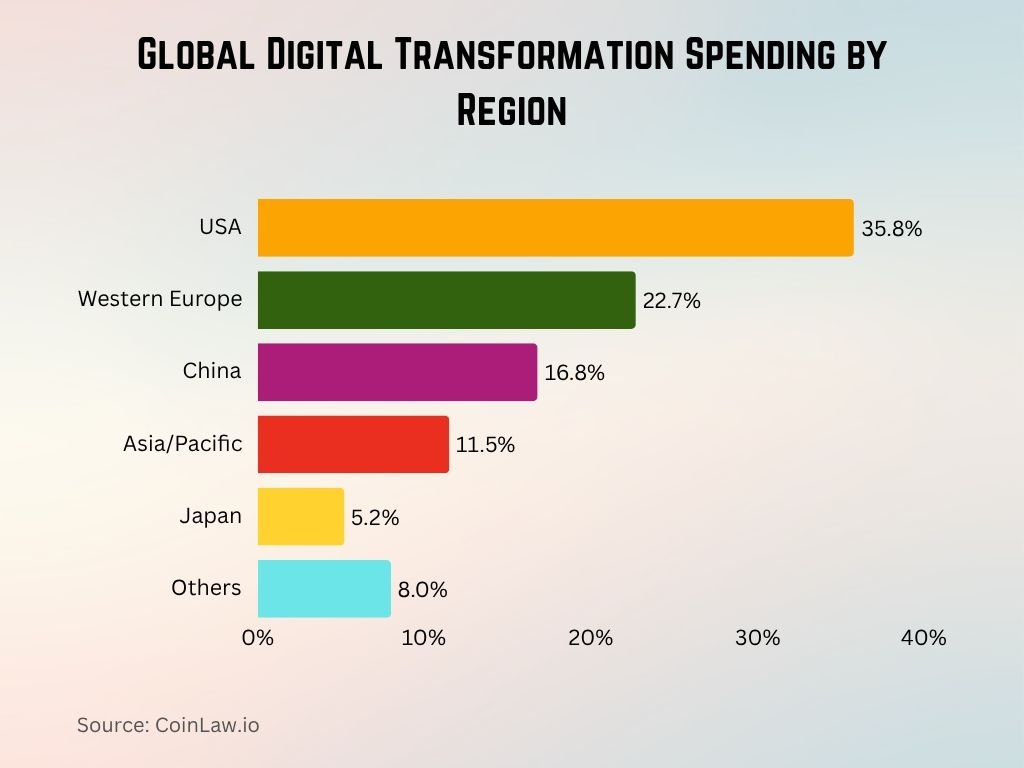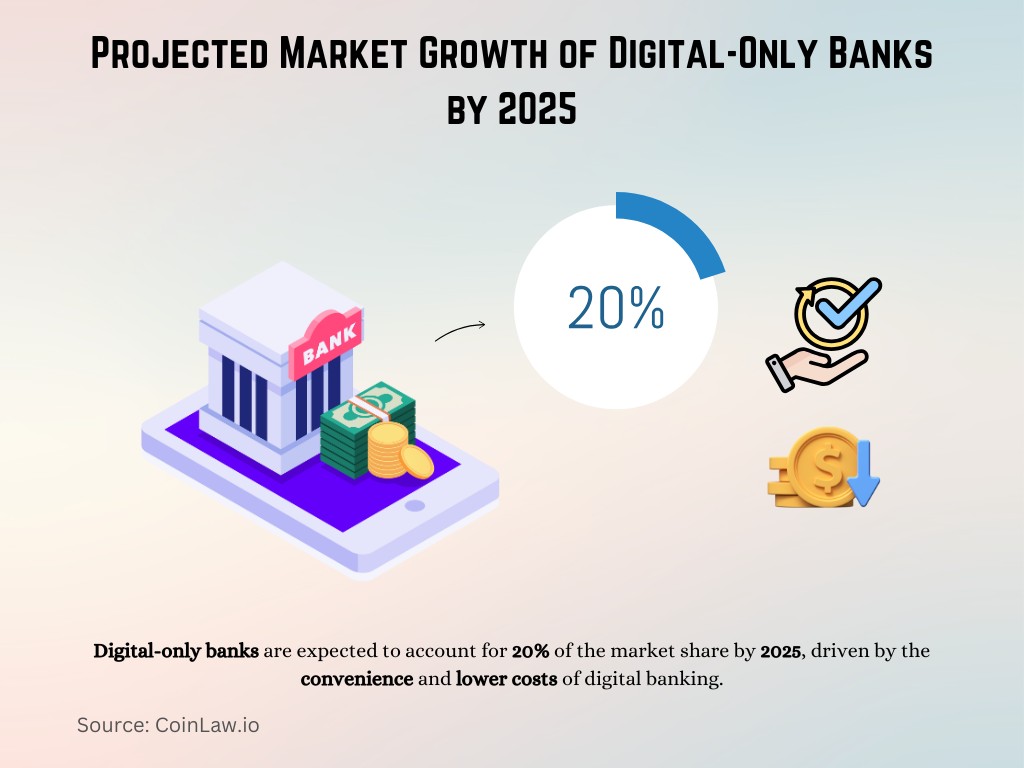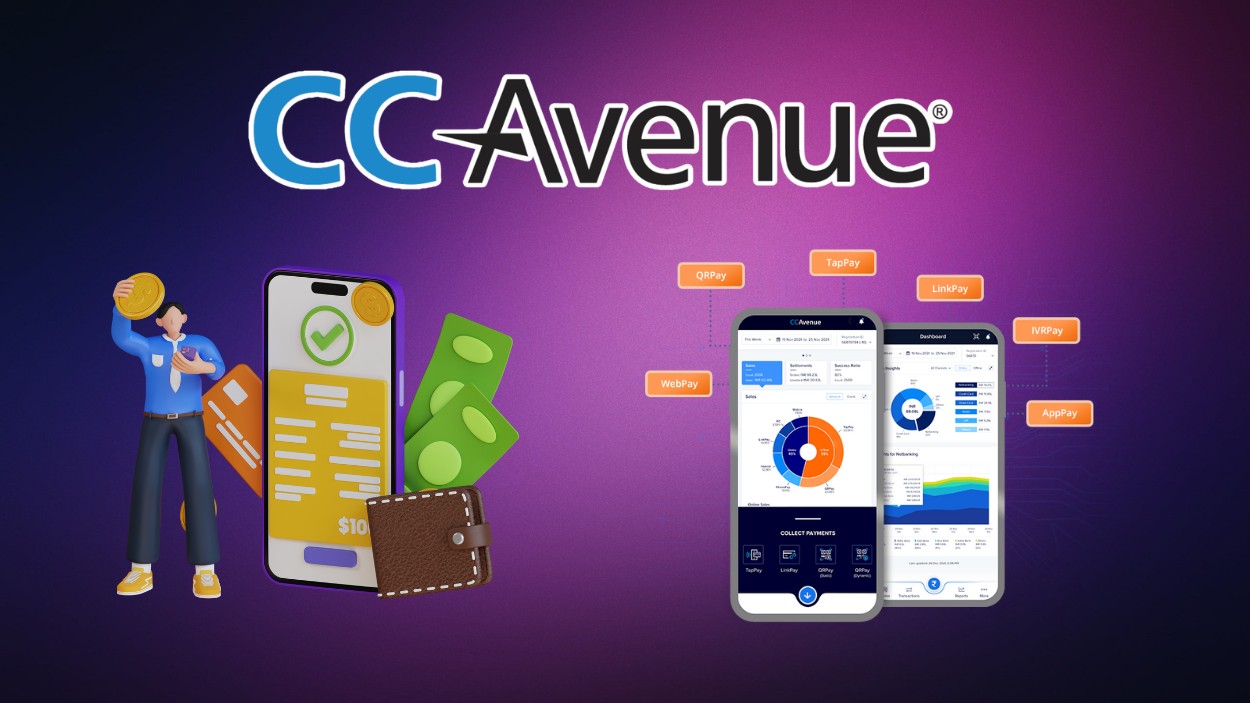Digital transformation in financial services has quickly shifted from an innovative concept to a crucial strategy for survival. In today’s rapidly evolving landscape, the financial services sector is embracing technologies like AI, blockchain, and cloud computing to remain competitive and meet changing customer expectations. The pace of transformation is remarkable, and by 2025, the impact of these technologies will only continue to grow. Understanding the key trends is essential for navigating this digital revolution.
Editor’s Choice: Key Trends in Digital Transformation
- AI-driven financial services are projected to reduce operational costs by up to 25% by the end of 2025, driven by automation and predictive analytics.
- Blockchain technology is anticipated to enable $5.5 billion in cross-border payments by the end of 2025, enhancing transaction speed and security.
- The adoption of cloud computing in financial services is expected to reach 90% of institutions by 2025, optimizing embedded finance operations.
- Cybersecurity spending in the financial sector is projected to grow to $75 billion globally in 2025 to combat increasing fraud risks.
- By 2025, 80% of financial institutions plan to offer decentralized finance (DeFi) products and services, reflecting a shift towards more open financial systems.
- Data analytics usage in finance is expected to improve fraud detection rates by 40% by the end of 2025, leveraging AI and machine learning.
- Open banking adoption is set to increase by 60% in 2025, driven by demand for greater financial transparency and flexibility.
Global Digital Transformation Spending by Region
- The USA leads in digital transformation spending with a market share of 35.8%, highlighting its strong investment in tech modernization.
- Western Europe holds the second position, accounting for 22.7% of global digital transformation expenditures.
- China contributes 16.8%, reflecting its growing emphasis on digital infrastructure and innovation.
- The Asia/Pacific region (excluding Japan and China) represents 11.5% of the total spending, indicating steady regional adoption.
- Japan maintains a smaller share at 5.2%, suggesting more targeted or mature digital initiatives.
- Other regions combined account for 8.0%, showing emerging but modest investment in digital transformation globally.

The Rise of AI in Finance
- AI-driven chatbots are projected to handle 95% of customer service interactions in financial institutions by the end of 2025, enhancing efficiency and customer satisfaction.
- AI automation is expected to save banks $70 billion by streamlining back-office tasks in 2025, significantly reducing operational costs.
- Predictive analytics, powered by AI, is anticipated to increase loan approval accuracy by 40% in 2025, leading to more reliable credit assessments.
- AI-powered fraud detection systems are forecasted to reduce fraud-related losses by up to 40% in 2025, bolstering financial security.
- By 2025, 85% of financial institutions are expected to use AI to assess credit risk, improving approval processes and risk management.
- Algorithmic trading systems, driven by AI, are set to handle 89% of trading volume by 2025, transforming investment strategies.
- The rise of robo-advisors is expected to manage over $1.4 trillion in assets globally by 2025, making wealth management more accessible.
Standardizing the Use of the Cloud to Optimize Embedded Finance
Cloud technology is not only essential for storing data but also for optimizing embedded finance, integrating financial services seamlessly into non-financial products and services. This shift allows companies to offer better and more personalized customer experiences.
- By 2025, 90% of financial institutions globally will be embracing cloud-based infrastructure to scale operations.
- In 2025, 50% of all embedded finance offerings will be hosted on cloud platforms.
- Financial institutions adopting cloud technologies expect to reduce infrastructure costs by up to 30%.
- The global embedded finance market is projected to reach $690.4 billion by 2030, supported largely by cloud solutions.
- 56% of FinTech companies cite scalability and speed as the primary reasons for migrating to the cloud.

- Cloud-based solutions are expected to drive a 23% increase in financial service innovations, especially in product customization.
- Data privacy and security concerns remain, but 78% of financial firms are developing cloud-first strategies to meet regulatory compliance and enhance embedded finance.
Keeping Up the Blockchain Momentum: Toward Decentralized Finance (DeFi)
- DeFi protocols are projected to handle over $376.9 million in revenue by 2025, reflecting significant growth in the decentralized finance sector.
- Smart contracts are expected to automate 72% of financial agreements by 2025, enhancing efficiency and accuracy in financial transactions.
- The adoption of blockchain technology is anticipated to save financial firms approximately $15 billion in transaction and record-keeping costs by 2025, streamlining operations and reducing expenses.
- Cross-border payments facilitated by blockchain are projected to reach $3.7 trillion by 2025, offering faster and more secure international transactions.
- By 2025, 45% of financial institutions are expected to integrate blockchain to enhance compliance and regulatory reporting, improving transparency and accountability.
- The tokenization of assets, powered by blockchain, is forecasted to grow to $30 trillion by 2030, unlocking new investment opportunities and liquidity.
- Decentralized finance (DeFi) applications are anticipated to onboard over 53.56 million new users by the end of 2025, driven by increasing trust in blockchain technologies.
Impact of Clear Goals on Change Transformation Success
- Organizations with clear goals during change transformation achieve a success rate of 30%.
- In contrast, those without clear goals only reach a 15% success rate.
- Having clear goals doubles the likelihood of success, a 2.0x improvement.
This highlights the critical role of goal-setting in achieving successful change outcomes.

Benefits of Digital Transformation in Financial Services
- Digital banking services are expected to reduce operational costs by 30% by 2025, as more processes become automated.
- Customer satisfaction in digitally transformed banks is projected to increase by 25% by 2025, thanks to enhanced personalization and faster services.
- By 2025, financial institutions that prioritize digital transformation will see a 40% increase in revenue from new digital channels.
- Cloud adoption in the banking sector is expected to cut infrastructure costs by 40% over the next three years.
- Digital payment methods are expected to account for 79% of global transactions by 2025, driven by consumer demand for convenience.
- Mobile banking users are predicted to grow by 15% annually, with an estimated 2.5 billion users globally by 2025.
- AI-powered customer service tools, such as chatbots, are expected to handle 95% of routine banking inquiries by 2025, increasing customer satisfaction and reducing operational strain.
Challenges of the Shift from Traditional to Digital Banking
- 55% of banks are struggling to modernize outdated legacy systems in 2025, hindering digital transformation efforts.
- 79% of financial institutions experienced payments fraud attacks in 2024, highlighting escalating cybersecurity risks.
- 32% of consumers cite data privacy as their top concern in digital banking, impacting customer trust in 2025.
- Compliance costs related to digital transformation are expected to increase by 20% in 2025, as banks adapt to new regulations.
- The tech talent gap will affect 60% of financial institutions in 2025, slowing their digital transformation initiatives.
- 40% of traditional banks face operational disruptions during the transition to digital platforms in 2025, affecting service continuity.
- Digital fraud is projected to increase by 25% in 2025, as more transactions move online, posing significant challenges.
C-Suite Leadership in Driving Digital Transformation
- 38% of executives plan to invest in technology, reflecting strong boardroom support for digital advancement.
- 39% of CEOs have placed digital transformation (DX) as a top priority for their CIOs, signaling strategic alignment at the highest level.
- Only 28% of CIOs currently own or sponsor DX initiatives, suggesting room for more direct leadership in transformation efforts.

Digital Transformation Trends in Banking
The future of banking is digital, and the trends shaping this transformation are vital for financial institutions aiming to stay competitive. From blockchain to AI, the latest trends promise to reshape the industry in profound ways.
- AI-driven solutions in banking are projected to grow by 50% by 2025, enhancing operational efficiency and customer experiences.
- Biometric authentication for secure banking transactions is expected to reach 75% adoption by 2025, ensuring safer digital banking experiences.
- Voice-assisted banking is on the rise, with 23% of mobile banking users predicted to use voice-activated services by 2025.
- Blockchain technology will drive innovations in smart contracts, with 60% of banks exploring blockchain applications by 2025.
- The demand for real-time payment systems is expected to increase by 35% in 2025, as consumers look for faster and more efficient transactions.
- FinTech partnerships with traditional banks are predicted to grow by 40% in 2025, fostering innovation and new service offerings.
- Digital-only banks are expected to account for 20% of the market share by 2025, driven by the convenience and lower costs of digital banking.

Cybersecurity and Fraud Prevention in a Digital-First Financial Landscape
- Cybersecurity spending in financial services is projected to grow by 12.2% in 2025, reaching a total of $212 billion, as institutions bolster defenses against escalating cyber threats.
- Multi-factor authentication (MFA) adoption is expected to reach 60% among financial institutions in 2025, enhancing protection against unauthorized access.
- AI-powered fraud detection systems are anticipated to reduce fraud losses by 20% in 2025, significantly enhancing fraud prevention efforts.
- Biometric security is projected to be utilized by 64% of financial institutions by 2025, offering enhanced protection against identity theft.
- Blockchain-based security systems are expected to protect over $7 billion worth of digital assets by 2025, mitigating the risks of cyberattacks.
- Data encryption investments are projected to increase by 13.8% annually, as banks enhance cybersecurity frameworks to safeguard sensitive information.
- Incident response times are anticipated to improve by 30% with the integration of real-time monitoring tools powered by AI, enabling faster threat mitigation.
Recent Developments in Digital Transformation
- RegTech investments are projected to grow by 68% in Q1 2025, driven by deals over $100 million, as financial institutions seek to automate compliance.
- Digital identity verification solutions will be used by 60% of banks in 2025, reducing the risk of fraud and speeding up customer onboarding.
- Embedded finance solutions are projected to generate $7.2 trillion in new revenues by 2030, with significant growth beginning in 2025.
- Green finance initiatives, powered by digital tools, are expected to increase by 25%, aligning with sustainability goals in 2025.
- Cryptocurrency adoption in mainstream finance is expected to reach 15% of global institutions by 2025, as regulatory clarity improves.
- Quantum computing is forecasted to make its first notable impact in financial services by 2025, with early applications in encryption and risk analysis.
- AI-based decision systems will drive 20% of all new product innovations in financial services by 2025, enabling more personalized financial solutions.
Conclusion
The digital transformation of financial services is no longer a choice but a necessity. The technologies driving this change, AI, blockchain, cloud computing, and more, are fundamentally reshaping the industry. As we move through, financial institutions that prioritize digital innovation, security, and customer-centric services will continue to thrive. However, those that fail to adapt may struggle to compete in this fast-evolving landscape. With the pace of change accelerating, the future of finance looks both challenging and exciting, offering endless opportunities for growth and innovation.
Hover or focus to see the definition of the term.


























































